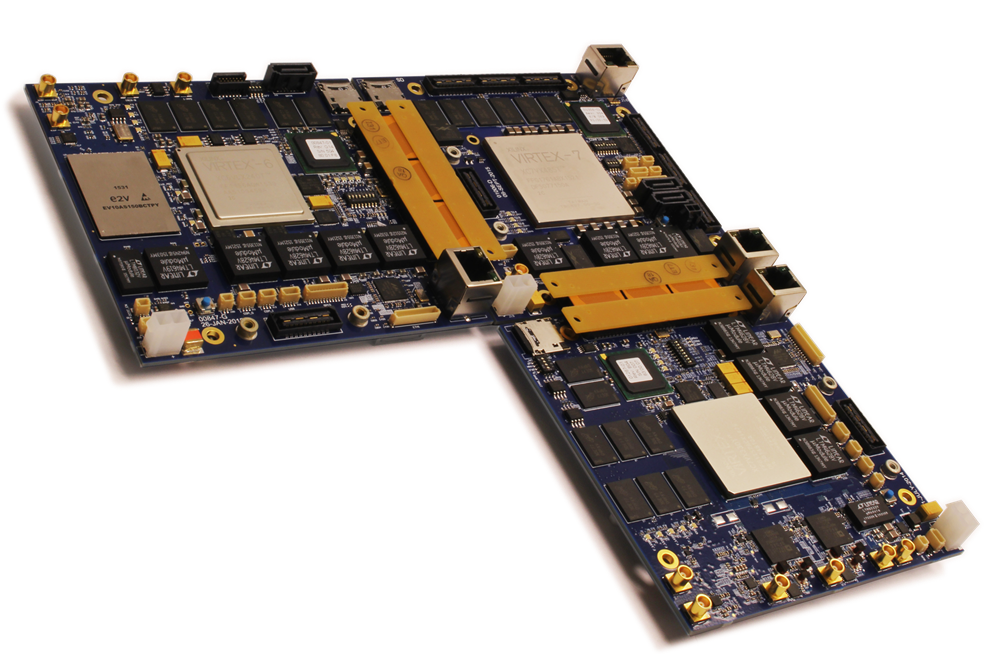DSPBRIK™ Additional Information
DSPBrik™ products are built upon FPGA technology to provide developers with high-performance parallel processing capabilities and in-field reconfiguration. The inherent parallelism of FPGAs enables developers to achieve processing performance and data throughput unmatched by general-purpose microprocessors. Using fast and dedicated resources, FPGA-based designs guarantee a high degree of reliability unachievable by other computation architectures. In-field reconfiguration allows systems to be easily enhanced and upgraded without costly hardware replacements. FPGAs are well-suited for embedded applications as they outperform conventional architectures (e.g., GPPs, GPUs) with respect to size, weight, and power (SWaP).
DSPBrik modules can be interconnected to form various physical topologies, such as 2-dimensional arrays and 3-dimensional vertical stacks. Connections are made using high-speed matched-impedance connectors that provide greater than 80 Gbit/s of bandwidth per connector. With flexibility in mind, the direction (e.g., input, output, bidirectional) and function (e.g., data, control, status) of each data signal on the DSPBrik II connector is defined by the application developer and can be reconfigured as required. DSPBrik products can distribute high-bandwidth data and signals by interfacing with common networking standards, such as GbE, 10GbE, and 40GbE.
Application (i.e., firmware) development for DSPBrik products is accomplished using mature, industry-provided FPGA development tools (not included). By utilizing industry-provided tools and standards, developers can leverage a large user support base and intellectual property infrastructure, which are significantly more limited for proprietary development flows. DSPBrik designs can be implemented using a wide variety of languages and tools, such as VHDL, Verilog, SystemC, OpenCL, and MATLAB.
